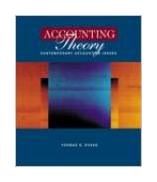|
||
podział tematyczny • wydawnictwa anglojęzyczne podział tematyczny Newsletter: • Zamów informacje o nowościach z wybranego tematu Informacje: • sposoby płatności i dostawy • kontakt • Cookies na stronie • Regulamin zakupów Napisz propresssp@gmail.com |
ACCOUNTING THEORY. CONTEMPORARY ACCOUNTING ISSUESEVANS T.wydawnictwo: SW , rok wydania 2003, wydanie Icena netto: This easy-to-read accounting theory text contains two distinct, but integrated parts. Part One focuses on two interwoven topics: accounting theory formulation and standard setting in a chronological format. This section analyzes the major historical efforts attempted in the development of an accounting theory. The Conceptual Framework project is studied, and the FASB and how it influences current standard setting is examined. Part Two covers contemporary financial reporting issues as they relate to the FASB's Conceptual Framework. Controversial accounting areas, such as cash flows, accounting for pensions, post-employment benefits and stock options, are studied within the context of the definitions of assets and liabilities provided by the Conceptual Framework. Interesting and challenging cases provide the reader with practical experience in applying accounting theory. Benefits: • Chronological Order: Accounting standard setting and theory formulation are interwoven chronologically. • Two Integrated Parts: The historical development of accounting standards and contemporary accounting issues are discussed within the FASB Conceptual Framework. • Global Perspective: Iinternational aspects are interwoven within the major themes of accounting standard setting and theory formulation. • Icons: Icons identify key people, events, and organizations that helped shape the development of accounting. • Reference Lists: Reference Lists are provided in each chapter so that the reader can research special interest issues. • Enron Examples: The text ends with a chapter on disclosure and Enron is mentioned twice in that chapter. • "New View Of Accounting" Approach: Accounting is seen as an important element in the financial fabric of the economy and capital markets, domestic and international. 390 pages Księgarnia nie działa. Nie odpowiadamy na pytania i nie realizujemy zamówien. Do odwolania !. |


